The main focus of the lab is studying the signaling and roles of a distinct zinc sensing receptor, ZnR/GPR39.
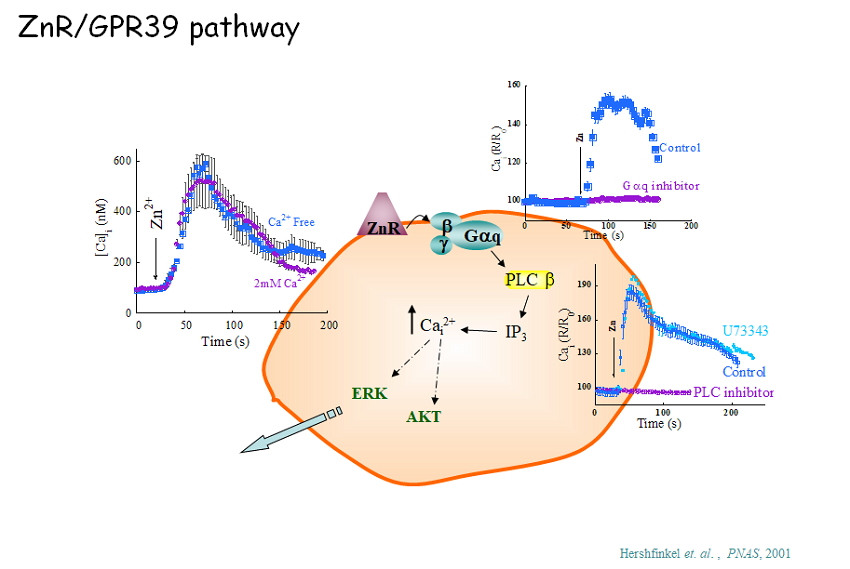
We identified this distinct Gq-coupled receptor that senses changes in extracellular zinc concentrations and triggers signaling pathways that are essential for function and survival of cells.

We have shown that synaptically released zinc can activate ZnR/GPR39 in post synaptic neurons and subsequently regulate the activity of the K/Cl co-transporter, KCC2. Activation of KCC2 enhances the inhibitory tone, and reduces the susceptibility to kainate induced seizures.
We have shown that ZnR/GPR39 activates other members of the KCC family, for example in colon epithelial cells ZnR/GPR39 upregulates KCC1, which is basolaterally expressed, and enhances Cl absorption. This pathway is essential for water absorption and loss of ZnR/GPR39-dependent activation of KCC1 enhance Cholera toxin induced diarrhea.
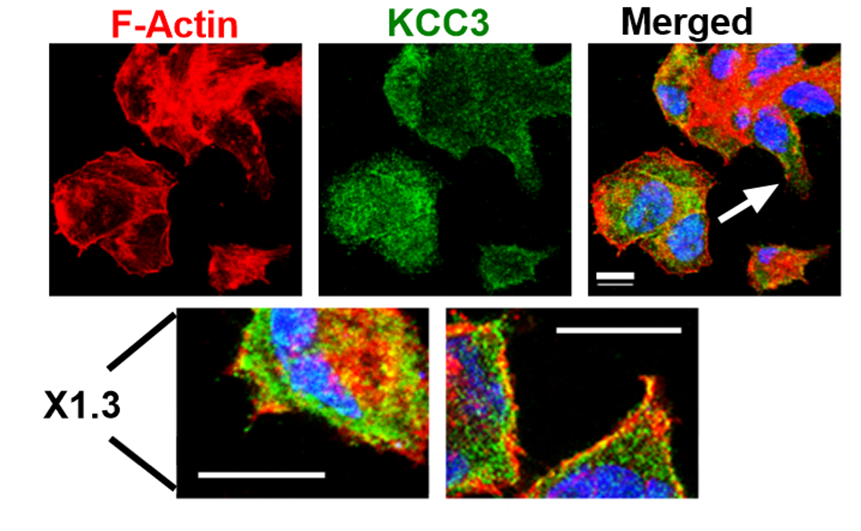
In breast cancer cells ZnR/GPR39 activation regulates of KCC3 that locally increases cell volume and enhances formation of cellular protrusions and release of MMPs. The activity of ZnR/GPR39 in breast cancer cells enhances their migration and invasiveness.
In t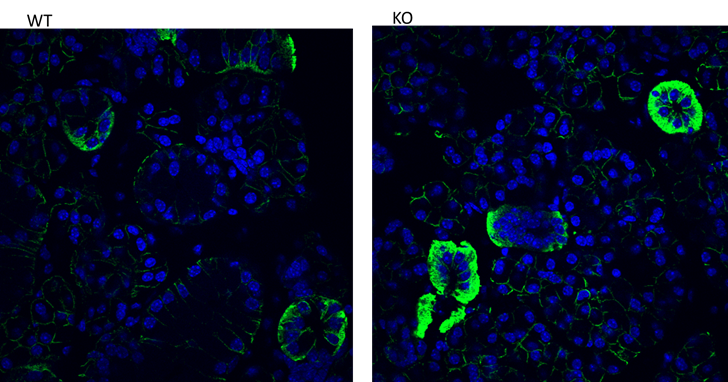 he salivary gland, zinc is important for secretion and contents of saliva. We are addressing the role of ZnR/GPR39 in regulating the epithelial cells that secrete saliva. Using animal models that do not have the ZnR/GPR39, we are studying how the cells regulate ions and how they proliferate.
he salivary gland, zinc is important for secretion and contents of saliva. We are addressing the role of ZnR/GPR39 in regulating the epithelial cells that secrete saliva. Using animal models that do not have the ZnR/GPR39, we are studying how the cells regulate ions and how they proliferate.
Zinc transporters play and important role in regulating the levels of cytoplasmic zinc. Our recent studies focus on identifying roles of ZIP1 and ZIP3 transporters in the brain. We show that the transporters are expressed in different neuronal populations and are differentially responsible for reducing zinc toxicity.
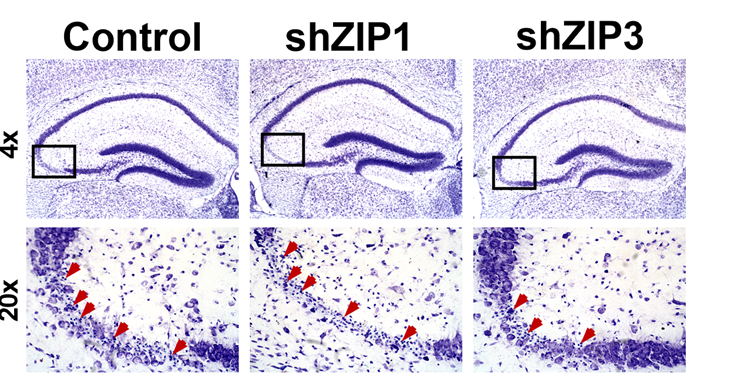
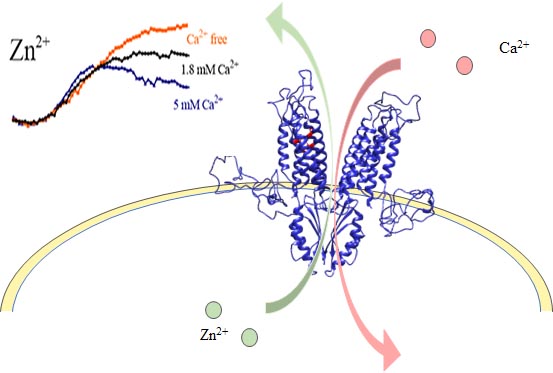
In addition, we are interested in the mechanism of function of ZnT transporters, and identified ZnT1 as the first zinc/calcium transporter. Using fluorescence imaging of zinc and calcium we monitor changes in neuronal metal ion accumulation in the presence or absence of ZnT1.